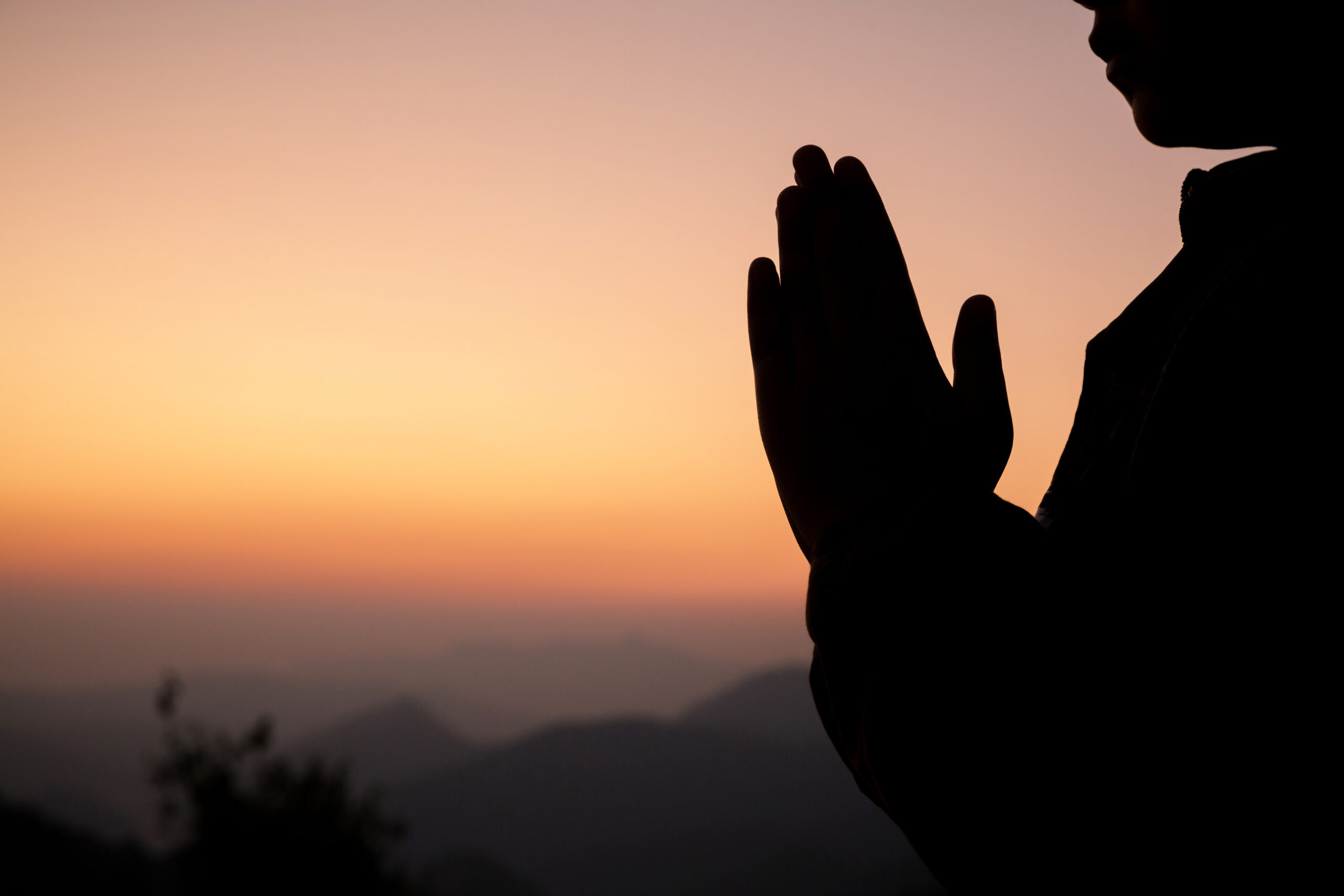Reach us: D-346, Sarvanand Marg , Malviya Nagar, Jaipur
Call Us : +91-9982991899


Dr. Chandra Gupta Ji attained the highly esteemed status of a saint and was widely recognized in Rohtak as “Devi Ji.” Whatever she spoke was believed to be the absolute truth. She authored a book on the Radhasoami faith titled Aakashvani, which was extensively used for propagating the faith in Rohtak for a long time. She also served as a jury member during her time.
Her younger sister, Ichharawati, was less educated and focused primarily on household responsibilities. She was married to Shri Hukamchand Jain.

When Dr. Chandra Gupta Ji’s elder brother, Lala Kalyan Sahai, relinquished his body, he passed on his spiritual wealth to Dr. Gupta’s father, along with his spiritual seat of authority.
On June 4, 1938, Dr. Chandra Gupta married Mrs. Darshana Devi, the sister of his friend, Lala Nanak Chand Mittal. Darshana Devi hailed from the city of Jind.
In 1939, Dr. Gupta moved from Rohtak to Bikaner with his father and began working as an in-charge in the accounts department of the Forest Department. He had seven sons and three daughters, of whom five sons and two daughters survived. Their names were Mrs. Pushpalata Gupta, Krishna Kumar Gupta, Mrs. Kamla Gupta, Shri Pawan Kumar, Shri Rajendra Kumar, Dr. Satish Kumar, and Dr. Ashok Kumar.
The first four children were born in Bikaner, while the remaining three were born in Jaipur. From 1939 to 1949, the family resided in Daga Building near Ratan Bihari Ji Temple in Bikaner. During this time, Dr. Gupta came into contact with Raj Jyotishi Mishra Ji, a distinguished devotee of Lord Hanuman. Under Mishra Ji’s guidance, Dr. Gupta achieved unparalleled devotion at the Hanuman Temple.
In 1950, when the family relocated to Jaipur, Dr. Gupta met Hindu saint Ram Sahai Ji, who became a pivotal spiritual guide for him.

Dr. Chandra Gupta Ji regularly recited the Ramayana and explained its profound meanings, which had a significant impact on him. He regarded his spiritual guide with great reverence. The deep influence of the Ramayana led him to dedicate his life to devotion and consider Lord Hanuman as his spiritual Guru. During this period, he also developed a strong desire to serve society.
In Jaipur, he learned homeopathy under the guidance of Dr. R.P. Mathur, a renowned homeopathic practitioner of the time, and earned a degree in the field. In 1957, he established a charitable dispensary at Daroga Ki Haveli on the Govind Raja Ji route, offering free medical consultations and medicines.
Meanwhile, in 1950, he was appointed to the office of the Accountant General of Rajasthan in Jaipur. Despite his job, he dedicated his mornings (8:00 AM to 9:30 AM) and evenings (5:30 PM to 8:30 PM) to attending to patients at the dispensary without charging any fees.
During this time, he met Shri Sagar Chand Soni, a patient who lived on Kalyan Ji’s Path. Shri Soni encouraged him to pursue the path of meditation and introduced him to the spiritual discourses of Mahatma Chaturbhuj Sahai Ji at Deenanath Ji’s Temple. Dr. Gupta became a regular attendee and, through these gatherings, met Mahatma Radha Mohan Lal Ji, the son of Mahatma Raghuvar Dayal Ji.
Dr. Gupta became a disciple of Mahatma Radha Mohan Lal Ji and started following his teachings. After initiating him as a disciple, Mahatma Radha Mohan Lal Ji told Dr. Gupta, “The work you are destined to do after my departure, you should begin today itself. Conduct spiritual gatherings, guide people in meditation, and prepare them for their spiritual journey.”
Mahatma Radha Mohan Lal Ji also sent Dr. Gupta to his spiritual brother, Thakur Ram Singh Ji, a highly esteemed saint in Jaipur, for further training in spiritual knowledge. Dr. Gupta remained in Thakur Ram Singh Ji’s service until 1971. Thakur Ji…
Thakur Ram Singh Ji considered Dr. Chandra Gupta Ji as his spiritual son and imparted all his spiritual knowledge to him. Thakur Ram Singh Ji relinquished his physical form on January 14, 1971, in Jaipur, and his final resting place is in Manoharpura village, Sanganer.
Dr. Chandra Gupta Ji embarked on his spiritual journey from 1957 to 1991, during which many individuals sought his guidance. Some of the prominent names include Shri Bharat Bhushan Sharma, Durgadan Charan, Shri B.N. Khanna, J.P. Singh, Dinesh Ji, Mrs. Krishna Shukla, Surya Prakash Shukla, Chandra Prakash Shukla, Gopal Lal Mathur, and many others, totaling around 50 individuals. They became his disciples and progressed spiritually under his mentorship.

Throughout his life, Dr. Chandra Gupta Ji experienced numerous miraculous events, many of which are beyond description. Among his family, his eldest son, Shri Krishna Kumar Gupta, was entrusted with full spiritual authority. From 1991 until his passing, Shri Krishna Kumar conducted spiritual gatherings (Satsangs) in Sethi Colony, Jaipur, in his father’s name. Even after his demise, the tradition of Satsangs continues in Sethi Colony under the supervision of Shri Satish Kumar Ji.
In 1994, I also moved to Malviya Nagar. After the passing of my elder brother, Shri Krishna Kumar Gupta, the Satsang tradition was extended to Malviya Nagar, where it continues to this day. The festival of Guru Purnima is celebrated annually. Initially, it was observed on a small scale but has since grown significantly, and now it is celebrated at different locations.
At present, Dr. Chandra Gupta Ji’s spiritual Satsangs are held in Jaipur at two locations and in Delhi at the residence of his younger brother, Shri Rajendra Kumar. All five sons of Dr. Chandra Gupta Ji have been initiated into the same Sufi sect by esteemed saints of the tradition.

“Final Words”
Our great spiritual leaders have practiced and presented various paths to attain the Supreme Being for us to follow.
Anyone can experience this journey by seeking guidance from a true Guru. When one walks on the path shown by the Guru, the journey becomes easier. However, as soon as a firm resolve is made to tread the spiritual path, the impressions and tendencies accumulated over countless lifetimes manifest as obstacles, often taking the form of negativity. These distractions prevent progress in numerous ways, and only a rare and courageous individual can muster the strength to overcome them.
The first stage of this journey involves overcoming indulgence and attachment to material pleasures. Every aspect of this stage is enticing—wealth, beautiful companions, and all forms of luxury abound. Fame and recognition can also be achieved here, but spiritual wisdom remains absent. This is the realm of illusion. However, if someone practices morality and uses material wealth appropriately, they earn the right to advance further on the path.
The next stage is even more challenging. Here, travelers often harbor love for those of their own faith while feeling hatred or animosity toward people of other faiths. These two tendencies—attachment and hatred—are the primary sources of the cycle of birth and death. Liberation from this stage is possible only through the grace of a true Guru.
This mortal world is referred to as the land of these two challenges. Only those who can let go of hatred for other religions and embrace love for all faiths can move forward on the spiritual journey.
The next stage of the journey is devotion (bhakti). At this point, one begins to feel remorse for past deeds and searches for a means to attain liberation. They engage in chanting and penance, worshipping and serving the unseen divine. Yet, when nothing tangible is achieved, they often become despondent and attempt to understand the divine through the path of knowledge (gyan).
As one enters the path of knowledge, the ego begins to dominate. The seeker may become obsessed with proclamations like “Aham Brahmasmi” (“I am the ultimate truth”). However, with the grace of a true Guru, the ego gradually dissolves. The seeker starts seeing the same divine soul in everyone, the mind finds stillness, and peace settles within. The sense of separation fades, and the heart begins to overflow with love.

From here, the journey toward liberation begins. However, many individuals choose to remain at this stage, as the difficulties of progressing further seem insurmountable. They lack the courage or endurance to continue.
The path ahead becomes exceedingly challenging, marked by rigorous trials. Only after successfully enduring these tests is the seeker permitted to move forward.
In the subsequent stages, the impressions and tendencies from countless past lives manifest as an army of inner demons (shaitans) that launch an attack on the traveler. This spiritual battle is intense, and only those who have complete faith and unwavering love for their true Guru can withstand it. The demons attempt to mislead and weaken the seeker, but calling out to the Guru remains the only way to survive this ordeal. The key is to never lose hope or courage.

By strictly adhering to certain principles and with the grace of the Guru, the path is crossed. In this journey, the support of the wife is also indispensable. It is essential for her to walk alongside as a companion. Complete surrender is required on this path, and
1. Restlessness and difficulties are not considered bad. They are endured with patience, and efforts are made to avoid them whenever possible.
2. The traveler here remembers the Guru and God with the heart and engages in work with their hands.
3. The travelers on this path are true to their work and words.
4. They practice what they know, whether external or internal, in full measure. They are individuals of righteous earning, virtuous deeds, and pure thoughts. They keep personal interests at bay.
5. Helping others is their life’s purpose, and they constantly work toward selflessness, erasing their own ego. They do not seek assistance for themselves. They treat everyone with love. When all karmic debts are paid, the demonic forces lose their influence. The Guru embraces the traveler with joy, granting permission to proceed to the next stage, leading them to liberation.
In the liberated stage, through experience and practice, the devotee becomes free from attachment and develops a deep and unwavering trust and love for the Guru. This ultimately leads to oneness with the Supreme Light, the form of God. Gradually, there is no distinction between the devotee and the divine, and they become one with the eternal light of the Lord.
As the Guru helps everyone and continues to practice his own discipline, he progresses steadily toward perfection. At a certain point, the path or the ascent goes beyond the reach of personal effort. It is then that the Supreme Light, in the form of God, takes the devotee in His embrace, dwelling in their heart, and the seeker becomes one with the divine. At this stage, God continuously remembers the devotee. Such a devotee is called a mureed (true disciple), and they attain the eternal state, becoming protectors and managers of the world. All of this depends on the highest service. The Guru is both the embodied form of God and the light, while his soul is the formless Supreme Being. Through selfless service to the Guru, offering body, mind, wealth, and soul, the devotee achieves liberation.

If a disciple gains blessings from another saint, it is ultimately the Guru’s blessing that has reached him. Therefore, such saints should be respected as one would respect their own Guru, whether the Guru is alive or has passed on. The disciple should always keep their heart connected with the Guru, for this leads to rapid progress.
If a disciple’s highest desire is not fulfilled for some reason, they receive the reward of two thousand years of worship (ibadat).
That cold sigh, which arises when a wish remains unfulfilled, is considered greater than two thousand years of worship. The disciple must remain steadfast in these principles. All are seekers; only the light remains.

The form of God is the Guru, who has taken a physical form and has led us to that state.
In this world, every person has the desire to attain worldly pleasures, but alongside this, there is an inner curiosity to know oneself and to gain self-realization. This inner curiosity often remains dormant in most people, but there are a few fortunate ones who, by the grace of the Guru, receive guidance. Before receiving the grace of the Guru, one must purify their life through virtuous living and hard work. Purity of food is also emphasized for this purpose. One should avoid prohibited foods and refrain from consuming alcohol.
There are mainly two categories of seekers:
1. Those who are caught in worldly troubles and, after being disappointed on all sides, seek refuge in a saint to free themselves from their hardships. After receiving the saint’s grace and overcoming their troubles, their faith and trust are awakened, and they become inclined towards spirituality.
2. Those who are influenced by the samskaras (impressions) of previous lives and wish to tread the difficult path of self-realization. With their strong willpower, saints are attracted to them and accept them. The saints assist in their spiritual progress in all possible ways.
The formation of a person’s samskaras (impressions) is determined by their actions. The scriptures describe three types of karma:
Sanchit Karma: These are the good or bad actions accumulated over many lifetimes that the soul has carried with it. The payment for these actions has not yet been made.
Prarabdha Karma: This is the portion of sanchit karma that must be experienced after taking birth. We do not have control over the payment of this karma, and it cannot be avoided. However, with the grace of saints, it is possible to be relieved from this karma more easily.

Kriyamana Karma: These are the actions we perform in the present life. Some of these actions are paid for in this lifetime, while the rest are carried over to the sanchit karma account.
A person is free to perform actions, but the result of those actions is in the hands of the Supreme. It is through this law that the cycle of birth and death continues. When a person commits wrong actions, they are not mindful of the consequences. However, when it is time to pay for these actions, they cry out in pain from the excess of suffering, repent for their bad deeds, and call out to the Supreme with a sincere heart. The ocean of mercy, the Supreme, then feels compassion for them and sends a saint to help them. The saint helps them to overcome worldly troubles and mental vices like lust, anger, greed, attachment, and ego, and gradually assists them in paying off their karmas, ultimately connecting them with the light-embodiment of the Supreme.
The Identification of a Saint:

True saints, who are moved by compassion, make the disciple sit before them and, through the process of Shaktipat, lift them beyond the physical realm (Pind) and guide them to a direct experience of the Supreme Being. They impart knowledge of meditation techniques involving sound (Nad) and light (Prakash) to the disciple. These saints, having transcended the limits of Fana (annihilation of the self) and Baqara (the eternal state), have realized the Supreme Being. They understand the struggles of household life, including its helplessness and challenges, and possess the power to resolve them. All these qualities were present in my revered Guru.
Qualities of a Disciple:
To attain the discipleship of a capable Guru, certain essential qualities must be present in the disciple. A person cannot be called a disciple until they are more loyal to their Guru than to God. The disciple must adopt the will of the Guru wholeheartedly, otherwise, they will not receive the will of the Supreme. The disciple should approach the Guru in a pure state of mind, as any impurity in the heart can affect the Guru’s heart, leading to harm instead of benefit. One should not meditate until the Guru instructs them to do so. The disciple should approach the Guru with a clear mind, free of distractions, and sit with respect. They should think that light from the Guru’s heart is flowing into their own heart, which facilitates a quick connection with the Supreme. Only when the disciple begins to hear the sound of Nad and sees various colors of light, and when their love for the Guru matures, can they truly be considered a true disciple of the Guru.
Service done with the heart is accepted, and at the right time, it is received. A disciple must understand the true needs of the Guru and dedicate service accordingly. Progress is achieved through service. Everything that has been attained comes from service.
Upcoming Events

